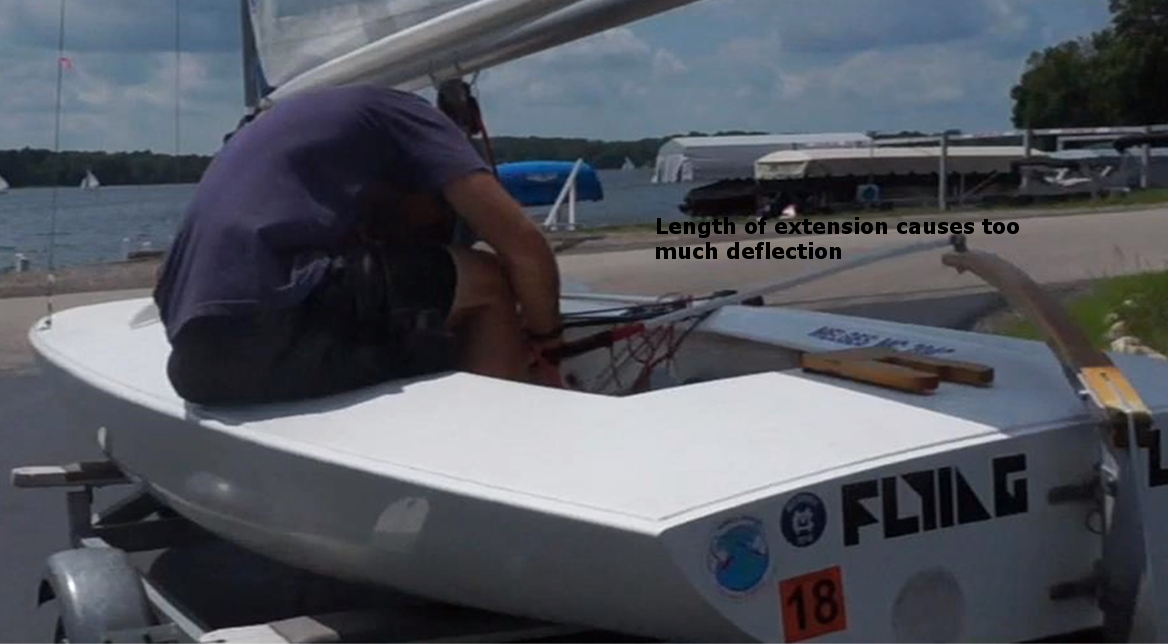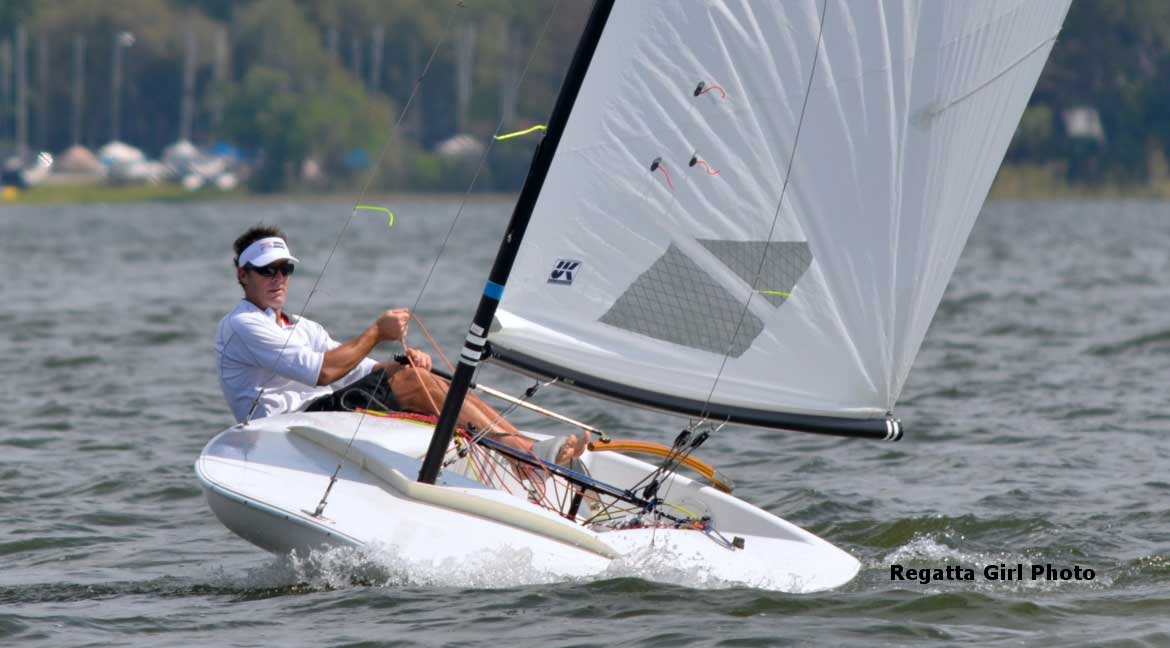How smooth are you at flat water steering? Minimizing rudder movement is key to good boat speed. If you answer yes to any of the following questions, you may be oversteering.
- Do you saw the tiller back and forth (perhaps without realizing it)?
- Do you let your heading change inadvertently while you’re looking around?
- Do you steer up or down more than 2-4 degrees in a puff or lull?
- Do deflect the tiller more than about 35-45 degrees when you tack?
- Do you sometimes realize belatedly that you have excessive weather helm?
Certainly there are times when you have to be aggressive with your steering – for example in a big shift or when sailing in waves. But often, sailors tend to oversteer. In this post, we present six tips to smooth out your flat water steering and go faster.
#1 – “Rest” Your Tiller Extension
A quick and easy way to correct oversteering is to rest your tiller extension. Place it on your lap, against your chest, or on the deck if it is on the opposite side of the boat. Then, when needed, move the tiller only by sliding it along the resting surface. This helps you limit the amount you slide it. You’ll be surprised how quickly this corrects any oversteering problems.
I have found this technique especially useful in responding to puffs. Many sailors’ first reaction is to steer up in puffs to manage angle of heel. This is slow. It’s much faster to control angle of heel by easing the mainsheet, pulling on sail controls, and hiking. With the tiller extension on your lap, you can build the habit of only steering up when the weather helm gets excessive.
The same concept applies in a lull. Don’t automatically steer down when the boat rolls to windward. If it’s a lull, steering down just loses height. Instead, control angle of heel by moving your weight in and powering up the sail. After that, if you have to steer down, do it smoothly by sliding your tiller extension.
Resting the tiller also helps you hold a constant heading while looking around, and we all need to do more looking around!
#2 – Loosen Your Grip
Some sailors maintain a “death grip” on the tiller. To help you feel the pressure in the helm, loosen your grip, either by just relaxing your hand or better yet by going to a two fingers and thumb grip. As soon as you feel excessive weather helm, correct it with changes in angle of heel, sail trim, or board position.
#3 – Mark Your Deck
Most sailing books recommend sailing with no more than 3-5 degrees of weather helm. Any more deflection of the rudder markedly increases its braking effect.
3-5 degrees is a fairly small deflection. You can mark your deck to give you a constant reminder of how small. See our post, Mark Your Deck to Check Rudder Drag, for how to determine placement of the marks.
#4 – Start Tiller Movement Slowly During Tacks
You want to retain as much speed as possible through your tacks. In flat water, one way to do this is with a slow, smooth initial turn. Instead of jamming the tiller over, just ease it slightly to leeward. Once the sails starting luffing, you can accelerate the rate of turn.
In heavy air and waves, you may need a faster initial turn to prevent the wind and waves from slowing you down too much.
#5 – Steer with Weight and Sail Trim
Steering with weight placement and sail trim is fast, but many weekend racers assume the technique is too advanced or doesn’t apply to their boats. See our post, Practice Rudderless Sailing to Improve Your Boat Speed. These techniques are not as hard as you may think, and will help you go faster even if you don’t become a rudderless sailing expert.
#6 – Limit Tiller Deflection During Tacks – Manage Your Extension
At the MC Scow Zenda U, Andy Burdick demonstrates tacking and tells sailors to deflect the tiller no further than the inside edge of the cockpit. This is hard to do for two reasons. First, if you don’t use sail trim and weight to steer, you have to deflect the tiller more to accomplish the turn. Second, if you push the extension straight through behind the mainsheet, its length will cause too much tiller deflection.

Here are some options for managing the extension to limit tiller deflection during a tack:
- Shorten the extension. This may be counter-productive for effective hiking.
- Move the tiller extension to your side and flip it aft during the tack. I have not practiced this enough to make it work.
- Lower the end of the extension toward the floor of the cockpit as you push it through. This decreases its effective length and lets you get it past the mainsheet and ratchet block with less tiller deflection.


